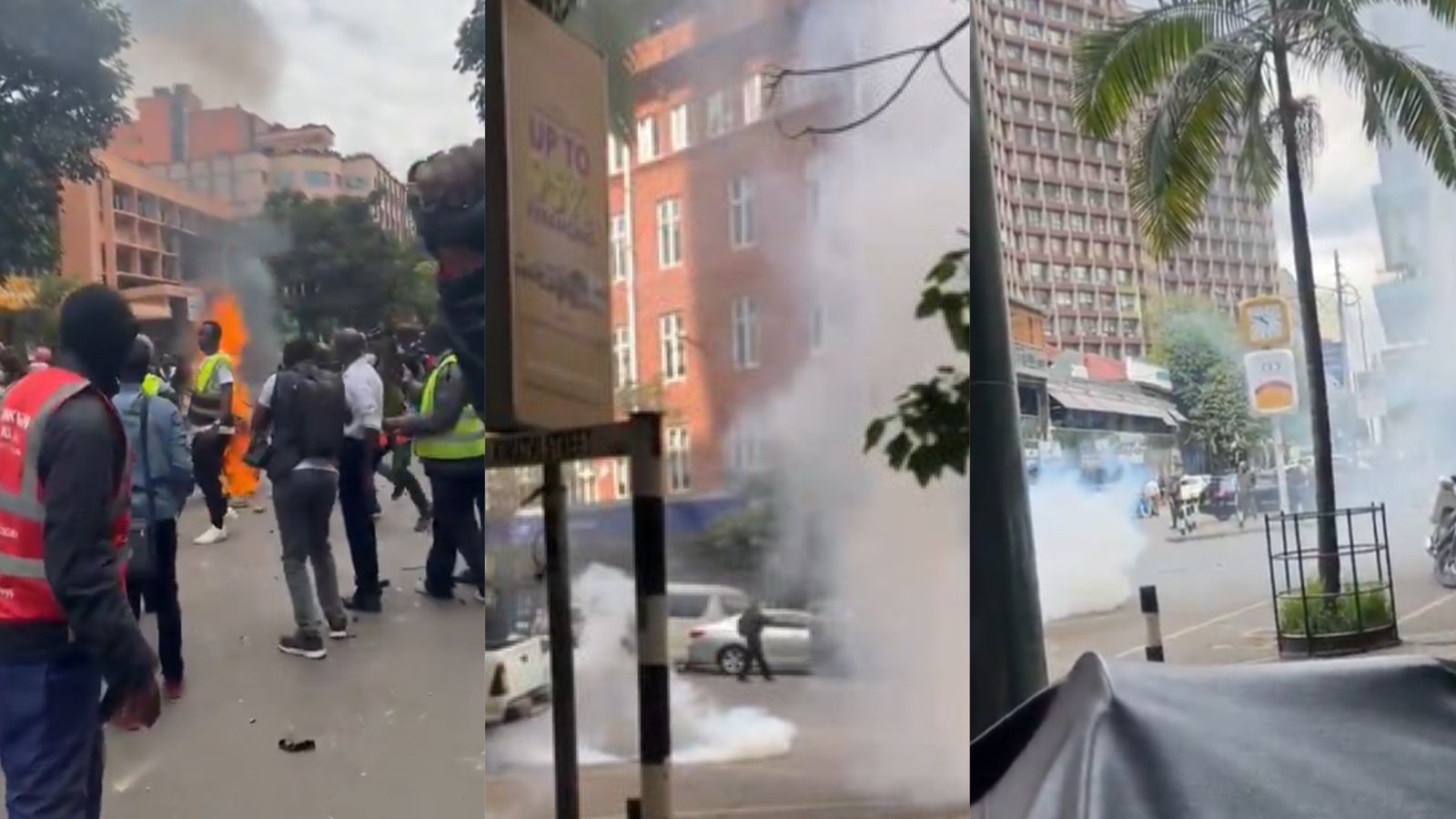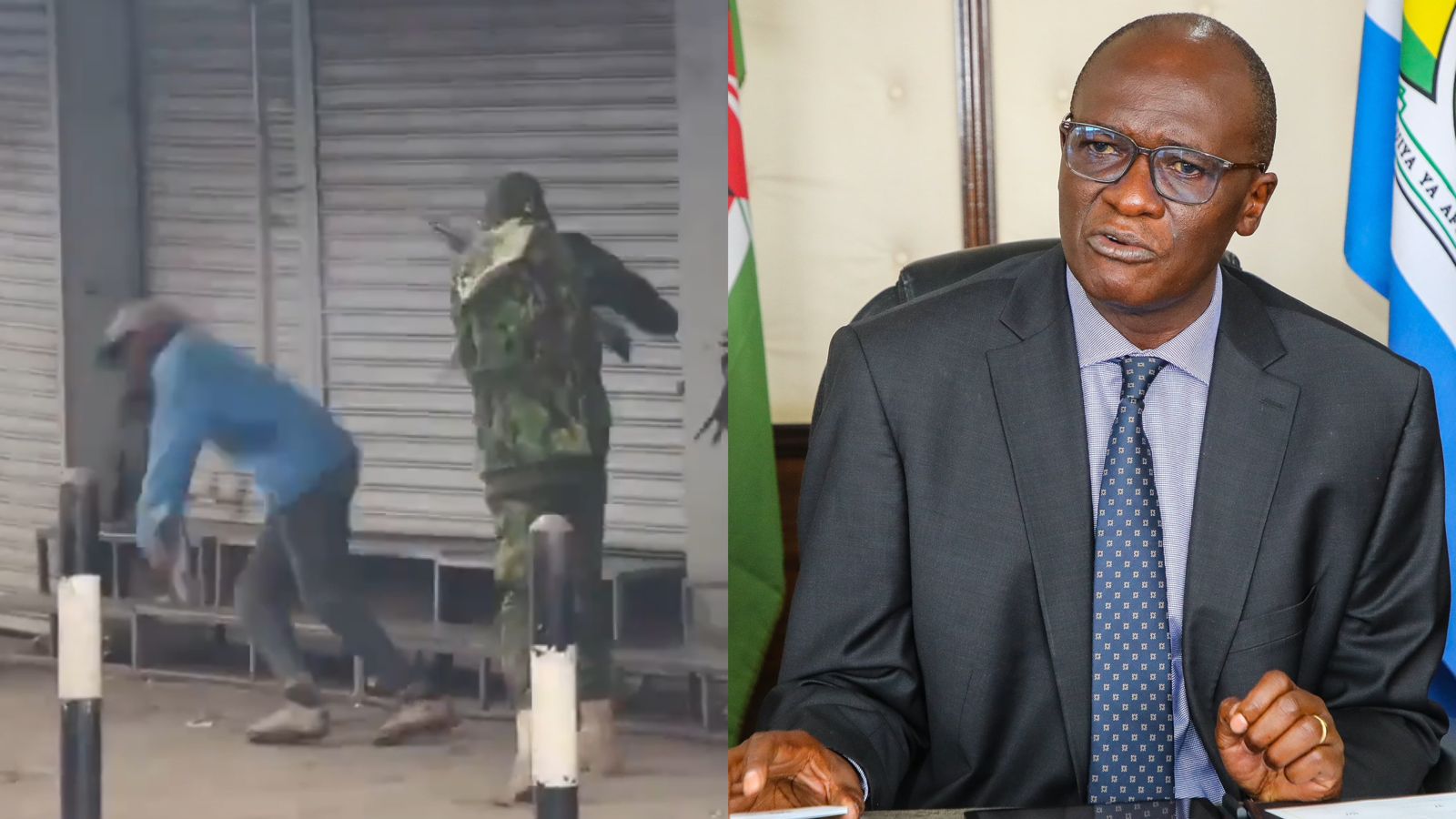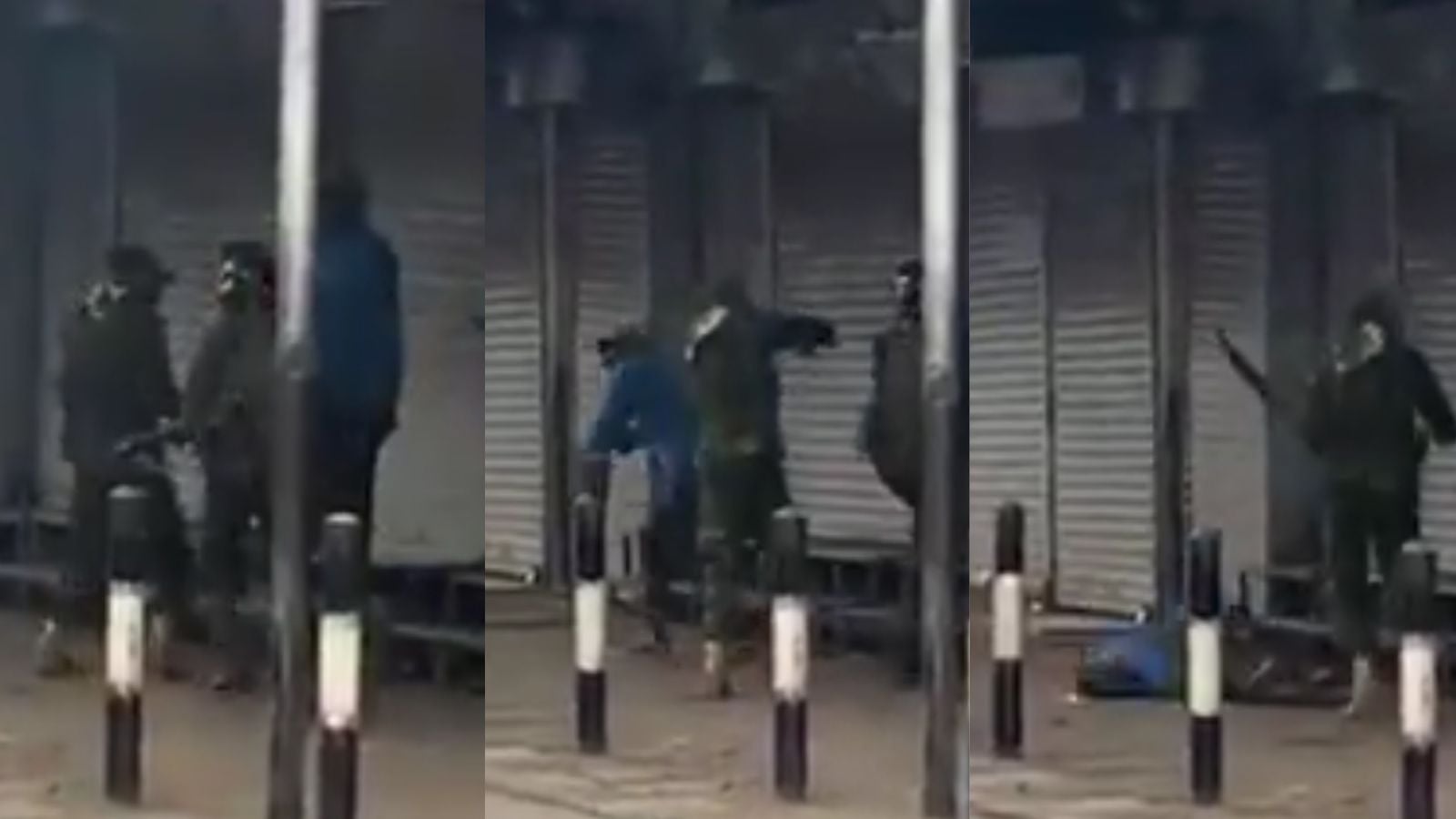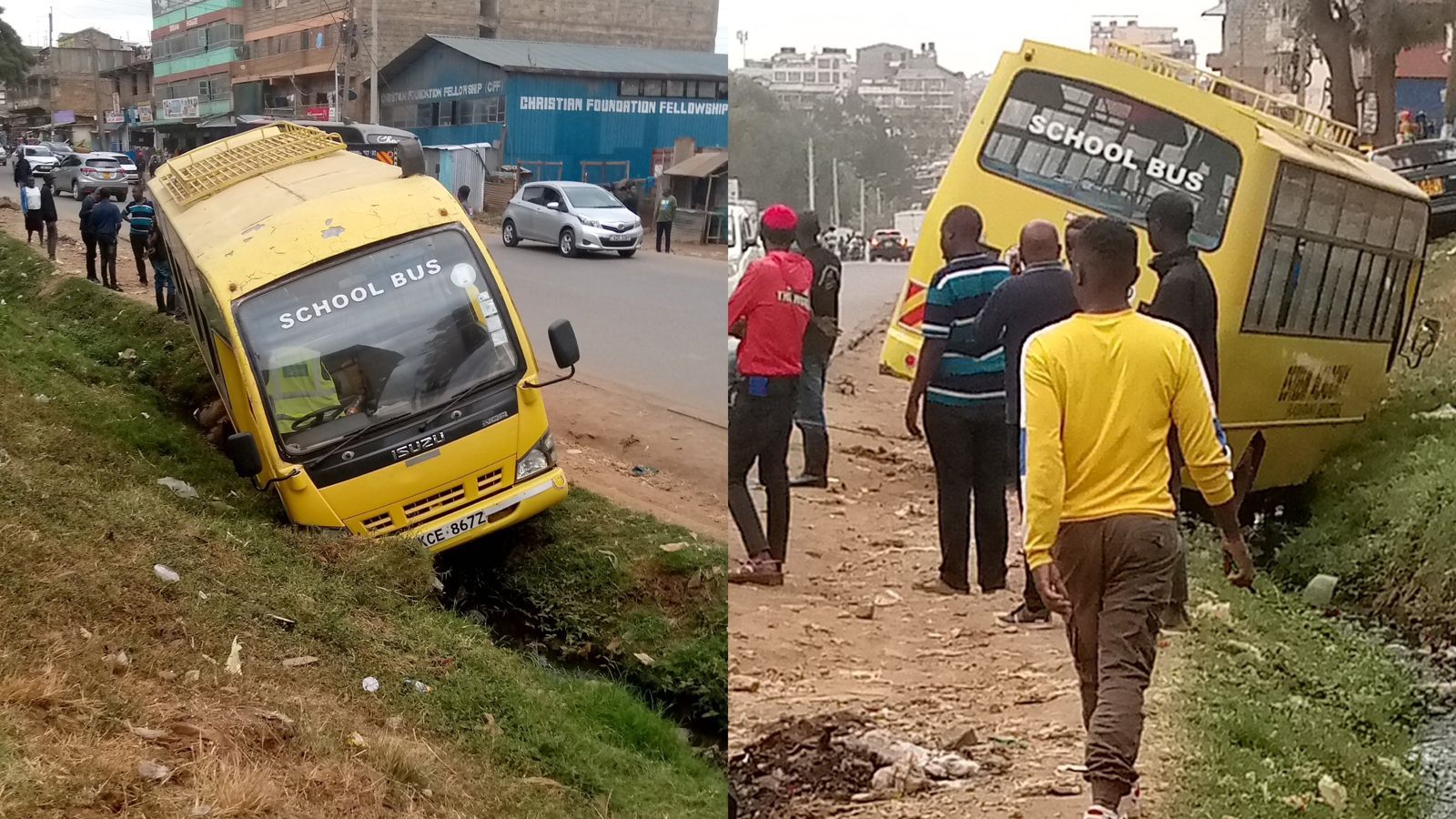Tension gripped the streets of Nairobi CBD on Tuesday, June 17, as demonstrations over the death of Albert Ojwang stretched into their second week.
Protesters, many carrying placards and waving Kenyan flags, poured into the city centre, calling for justice for Ojwang.
The situation quickly escalated when police fired tear gas at a group of demonstrators outside Nation Centre.
The crowd had gathered for prayers before continuing with the protest.
At the same time, key roads leading into the CBD, including Mombasa Road, Thika Superhighway, and Jogoo Road, saw a heavy police presence.
Read More
Concerns emerged after a large number of people arrived in Nairobi CBD on motorbikes, believed to be goons, chanting "hakuna maandamano."
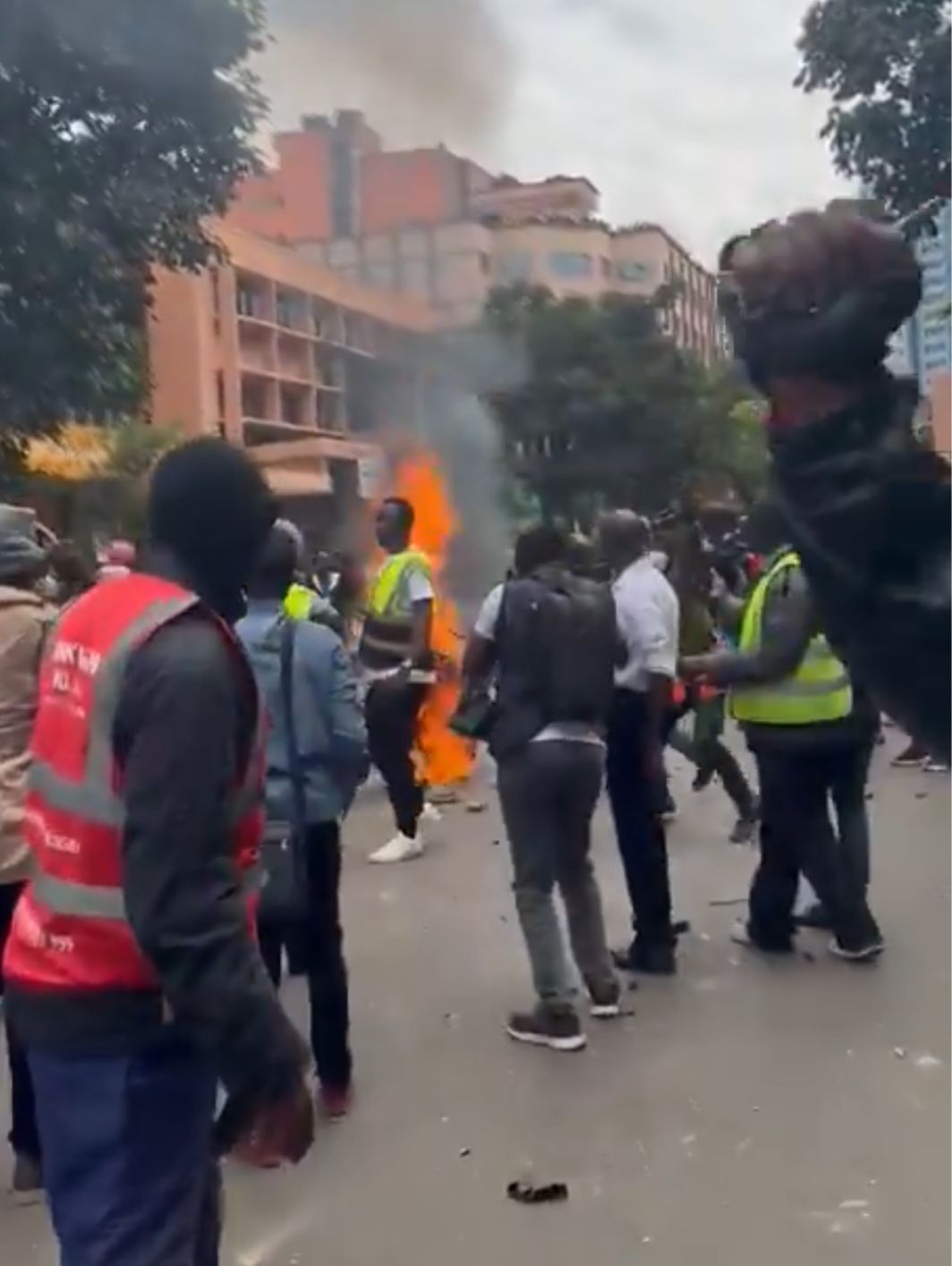
Posts on social media indicated that some of these individuals arrived on motorbikes and were allegedly robbing peaceful protesters.
Meanwhile, in Mombasa, crowds also gathered in the city centre with banners demanding justice for Ojwang.
Unlike in Nairobi, the protests there remained calm, with police monitoring the situation from a distance without interfering.
On Thursday, June 12, hundreds of protestors poured into the streets responding to Ojwang's death.
By mid‑morning, roads leading to Parliament were clogged as demonstrators blocked traffic, chanted “Lagat must go” and held up Kenyan flags and placards demanding "Stop killing us" and justice for Ojwang.
However, the protests turned chaotic when some protesters torched vehicles, smashed windows and set cars ablaze.
Ojwang died while in police custody at the Central Police Station in Nairobi.
He was arrested in Homa Bay with authorities accusing him of defaming Deputy Inspector General of Police Eliud Lagat by publishing what they described as "false information".
Police initially stated he had died from injuries sustained by banging his head against a cell wall, suggesting suicide.
However, an autopsy carried out on the same day revealed that Ojwang suffered significant head trauma, neck compression, and multiple soft-tissue injuries consistent with physical assault.
